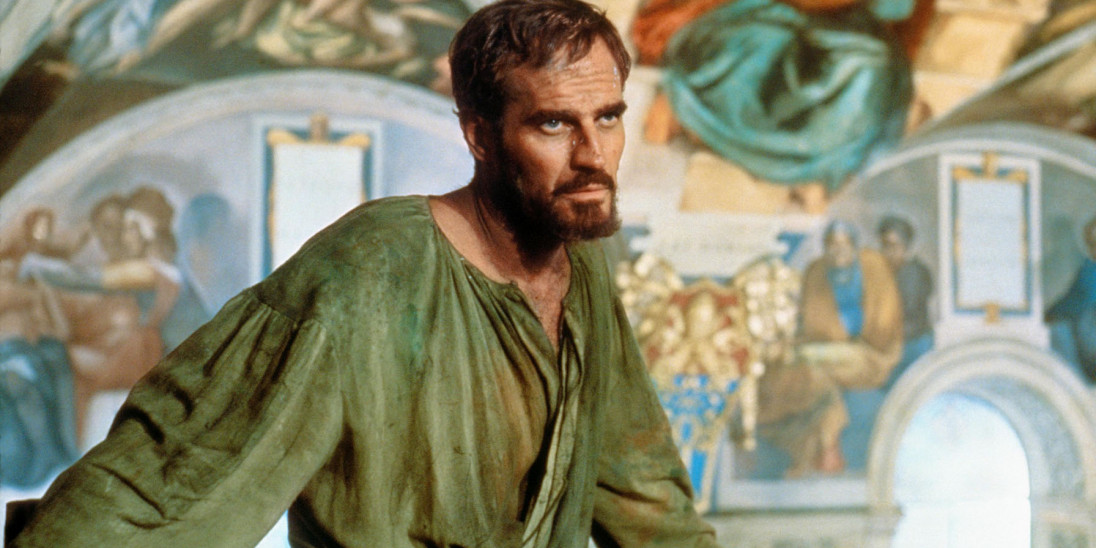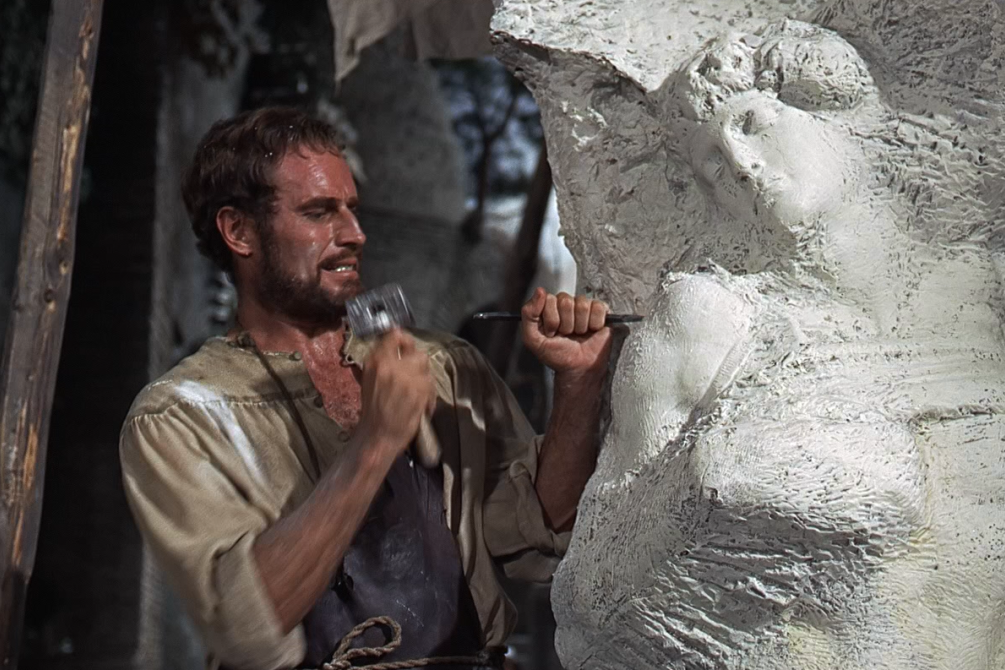“The Agony and the Ecstasy” by Irving Stone is a seminal work in historical fiction, offering readers a vivid portrayal of the life and art of the Renaissance genius Michelangelo Buonarroti. This scholarly article seeks to delve into the depth of Stone’s narrative, exploring its historical accuracy, character development, and artistic interpretations. Through a comprehensive analysis, it aims to showcase the novel’s contribution to our understanding of one of the greatest artists in history.
Irving Stone’s “The Agony and the Ecstasy” is a literary tour de force that immerses readers in the artistic landscape of the Italian Renaissance, offering a profound exploration of the life and art of Michelangelo Buonarroti. Published in 1961, this novel quickly ascended to the status of a timeless classic in historical fiction, captivating audiences with its richly detailed narrative and emotional depth. In this scholarly article, we embark on a comprehensive analysis of Stone’s work, delving into its historical context, the evolution of its characters, its interpretations of artistic genius, and its enduring contribution to our understanding of Michelangelo’s indelible legacy.

In Irving Stone’s “The Agony and the Ecstasy,” one cannot help but be swept away by the meticulous historical accuracy woven into its very fabric. With a finesse reminiscent of the epic storytelling, Stone plunges the reader into the heart of the Italian Renaissance, where the past is not a distant tableau but a living, breathing entity.
In the hallowed streets of Florence, Stone’s narrative resonates with the sounds and sights of a bygone era. The clamour of merchants hawking their wares, the resonance of church bells echoing through narrow alleys, and the intoxicating scent of oils and pigments fill the pages. It is not merely a historical novel; it is a sensory immersion into the Renaissance, where one can almost feel the cool touch of marble beneath Michelangelo’s chisel.

Within the Vatican’s hallowed halls, the political machinations of the time, overseen by the formidable Pope Julius II, come to life. Stone captures the intrigue and manoeuvring with a flair that is worth appreciation. The Vatican becomes a crucible of power and ambition, where the fate of artists and their creations is often decided by the whims of the Church.
Yet, it is in the portrayal of artistic rivalries and collaborations that Stone’s historical accuracy shines. The reader is transported to a world where giants of the art world, such as Leonardo da Vinci and Raphael, tread the same cobblestone streets. While Stone occasionally relies on speculation to animate the interactions between Michelangelo and his contemporaries, these interactions remain grounded in historical plausibility. It is in these moments that the Renaissance comes alive as a crucible of creative fervour, intellectual exchange, and artistic innovation.
Yet, one must acknowledge that “The Agony and the Ecstasy” does not strictly adhere to the rigorous constraints of historical documentation. The dialogues and conversations that punctuate the novel, while inspired by historical accounts and letters, are often poetic re-imaginings, infused with emotion and dramatic flair. Here, the historical novel, allows for a fusion of fact and fiction, inviting readers to experience history not as a distant observer but as an intimate participant.
In this dance between historical precision and the imaginative, “The Agony and the Ecstasy” becomes an evocative portal to the Italian Renaissance. This intricate blend of fact and fiction enriches our understanding of the Renaissance, where the boundaries between history and imagination blur, allowing us to grasp the essence of an era through the eyes and emotions of its denizens.
Within the pages of Irving Stone’s magnum opus, “The Agony and the Ecstasy,” the characters come to life in a manner that mirrors the rich and intricate character studies found in the finest literary works. Stone’s portrayal of these individuals transcends the mere ink on the page, evoking emotional connection with readers.
At the heart of this historical masterpiece is the character of Michelangelo Buonarroti, whose presence looms large. Stone’s narrative embarks on a sweeping journey through Michelangelo’s life, from his formative years under the tutelage of Domenico Ghirlandaio to his ascent as one of the Renaissance’s foremost artistic luminaries. Stone’s approach to character development, much like a seasoned novelist, captures the essence of Michelangelo’s persona with remarkable depth. Through Stone’s pen, Michelangelo is not a mere historical figure but a multidimensional individual, driven by an unyielding passion for art. We witness his relentless pursuit of perfection, his unwavering independence, and the emotional complexities that lie beneath his stoic exterior.

Michelangelo’s character crosses the boundaries of his studio; he grapples with profound existential questions, his vulnerabilities laid bare. Stone’s portrayal paints a portrait of a complex, evolving individual whose journey becomes a visceral experience for the reader.
Yet, the novel’s rich character nuance extends beyond Michelangelo. Stone introduces a constellation of historical figures, each contributing to the narrative’s depth. Pope Julius II emerges as a character of great complexity, akin to the finely wrought political players found in the most engaging novels. He embodies not just the historical role of a pontiff but the embodiment of ambition and authority. His interactions with Michelangelo serve as a prism through which the reader can explore the intricate interplay between the ecclesiastical world and the realm of the arts during this pivotal period.
The presence of Leonardo da Vinci, another towering figure of the Renaissance, adds further depth to the narrative. His interactions with Michelangelo offer readers a fascinating glimpse into the clash of creative giants. These interactions showcases to Stone’s ability to breathe life into historical figures like Michelangelo.
Nonetheless, it is crucial to acknowledge that “The Agony and the Ecstasy” is fundamentally a work of historical fiction. Stone, in the tradition of the finest storytellers, occasionally employs creative license to infuse drama and emotion into the narrative. Dialogues, for example, are meticulously constructed, drawing from historical records and correspondence but imbued with artistic freedom to amplify their emotional impact.
Beyond being a biographical account, “The Agony and the Ecstasy” is an intricate exploration of the artistic process itself. Through vivid descriptions and illuminating dialogues, Stone invites readers into Michelangelo’s creative sanctum. The novel vividly elucidates the monumental challenges and sublime joys that come with sculpting marble, painting frescoes, and conceiving architectural marvels in the Renaissance milieu.
Moreover, the book delves into the spiritual and emotional dimensions of Michelangelo’s work, revealing the artist’s profound connection to the divine, which he believed was manifest in the art he created. This aspect of the novel invites scholarly discourse on the nexus between art and spirituality during the Renaissance, as well as the significance of this connection in the broader history of art.
The profound impact of “The Agony and the Ecstasy” extends beyond its literary merits. Stone’s magnum opus has played a crucial role in popularising the life and oeuvre of Michelangelo, encouraging countless readers to delve deeper into the artist’s actual works and biographical accounts. Furthermore, the novel has significantly influenced the public perception of Michelangelo as a passionate and tormented genius, leaving a mark on popular culture.
Scholars are well-served by exploring how “The Agony and the Ecstasy” has shaped and continues to shape the public’s image of Michelangelo, shedding light on the implications of such popular portrayals for art appreciation, education, and the enduring reverence for the genius of the Italian Renaissance.
In Irving Stone’s “The Agony and the Ecstasy,” we encounter not only a compelling work of historical fiction but a captivating portal to the Renaissance world of Michelangelo Buonarroti. Through meticulous attention to historical detail, nuanced character development, profound artistic interpretations, and an enduring contribution to our understanding of Michelangelo, this article underscores the significance of the novel in both literature and art history. By navigating the intricate interplay of fact and fiction within the narrative, we gain deeper insights into Michelangelo’s personal struggles, artistic triumphs, and the eternal quest for creative brilliance.
David: The neglected block of marble given to the 26-year old Michelangelo to complete

Contributor





